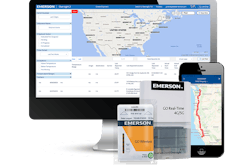
From vaccines to vendor relationships, supply chain cybersecurity has been an emerging issue and it’s not going away anytime soon. Today, businesses need to consider cybersecurity among the top risk factors in their supply chain and assess and mitigate accordingly. Cybercrime is expected to cost the global economy $6 trillion annually by 2021, which would be the world’s third-largest economy if measured as a country. However, today’s lapses in security are not always linked to the physical product supply chain, but an adjacent data chain.
This complex adjacent data supply chain has emerged as companies focus on delivering a more transparent and personalized experience with their products, and it is fertile ground for potential security failures, regardless of motive. Effective cybersecurity strategies require an in-depth understanding of the connections and flow of information between systems, and a keen understanding that in a distributed environment, vulnerabilities can happen at multiple points of entry across the value chain. It’s not just the consideration around the product itself. Connections that products have to other devices and systems must also be considered. The more complex that web becomes, the greater the potential risk.
To counteract this, businesses are investing in technologies that enable proactive cybersecurity risk checks among suppliers and trading partners to help identify potential security issues before a breach can occur. But, where should they focus?
Personalization comes at the cost of increased risk
When securing the supply chain, businesses need to consider not only the suppliers and producers but also the consumer and end user. Take for example the coffee supply chain. To secure the supply chain, it’s vital to consider the coffee as a product, from bean to cup, but also the varying applications and integrations with other devices once it reaches its final destination. Assessing the entire product lifecycle, the coffee beans are packaged and labeled with a barcode, sent to a roaster and then transported to the kitchen, where the coffee is brewed. If the kitchen(s) are equipped with smart coffee makers, the appliance is likely connected to the cloud. Sustainable coffee bean harvesting, packaging, labeling, roasting, shipping and brewing are already some of the examples in the supply chain where potential breaches or pitfalls are waiting to happen, if not properly secured.
Add to this an increased focus on personalization, more and more organizations are integrating technologies to create customized experiences. While this is a winning strategy from a customer experience purview, it creates many more touchpoints that need to be secured. In this instance, the adjacent supply chain outside of bean production is made up of cloud-connected smart gadgets connected to WiFi and smart apps on the consumer’s mobile device. This is where loopholes can exist, and where the dark actors can have easy access, not necessarily in the main supply chain of the product.
For example, say a large company invests in a specific brand of smart coffee brewers and hosts these machines across 20 office locations. Employees can use their company-issued devices – connected to their network – to queue up their coffee brew settings so they just hit “start” when they arrive at the machine. This seemingly simple convenience enabled by Internet of Things (IoT) just opened a slew of potential risks between the employer’s network, their network service provider, the coffee brewer brand’s network and its service provider, as well as data solution providers that capture, host and process data on behalf of any of your supply chain trading partner relationships, an adjacent data supply chain if you will. If there’s a weak link at any point in this data supply chain, the whole chain is at risk.
Therefore, to secure the supply chain end-to-end, you need to look at both the product and adjacent data supply chain. Within the product supply chain, it is important to consider the vendor and vendor factory assessments for security compliance. Within the adjacent data supply chain, businesses need to consider cybersecurity risks across all of the appliances and mobile devices being interconnected through the process – from transporting all the way to consumption.
Digitalize the supply chain to improve security
This can all seem daunting for even the most seasoned supply chain professionals, but broken down step by step, it’s wholly possible to create confidence in the entire supply chain’s security. First, look at the product. Take into consideration the supply chain usage, vendors, as well as factory assessments for cybersecurity. Next, identify the adjacent data supply chain. This adjacent chain is usually fueled by products integrated with personalized capabilities like in the above smart brewer example. Finally, combine both the product supply chain and the adjacent data into a supply network that can evaluate risk. Ultimately, digitalization of the supply chain, and extended supply chain transparency and visibility, can help secure the supply chain.
The days of supply chains existing only from bean to cup are over, and therefore the days of managing risk only within the parameters of a linear supply chain are also over. When assessing risks for avoidance or mitigation, consider both the supply chain and its adjacent data supply chain to minimize the time, costs and reputation damage related to potential security lapses. Failure to do so could be catastrophic on many levels, and competitors won’t hesitate to capitalize on a brand’s security shortcomings to lure your customers away.



















